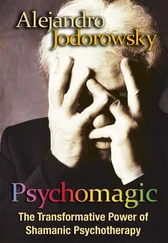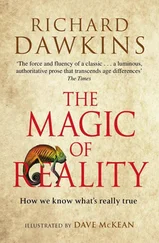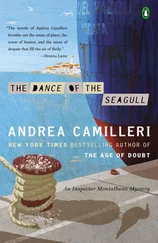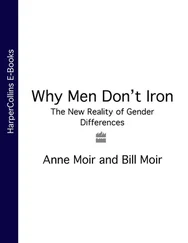From there I went on to conquer the flesh, muscles, and viscera. Using high quality oil I began with continuous rubbing with both hands, giving a touch without beginning or end. The body ceases to have individual parts; it becomes a whole, a path that does not desire to arrive at any point, only to extend. The hands pass over and over, taking different directions every time, and the body loses its limits and feels infinite. After this, the massager begins to “open.” The hands, on a given region of the body, are placed together, side by side, and then pressed strongly apart from each other, transmitting the idea to the patient that she is being opened up. Accumulated sufferings, withheld love, anger, and resentment all flow out through this metaphorical opening. The entire body is a memory. I remember a woman who began to whimper when I opened her left knee: there she carried the pain of her mother, who had lost her leg in a car crash. Screams and rage arise when the chest is opened. From the back, resentment against betrayals emerges. When the pubis is opened, a mother’s hatred of men might come out, or guilt over an abortion, the anguish of frustrated homosexuality, and so forth. When I opened the soles and heels of an old man he wept, letting out his sorrow at having been taken away from his native village at age six, losing the landscape and his friends forever. A woman whose heart I opened began trembling as if having a seizure. Without reasoning, driven by a strange impulse, I took off her wedding ring and instantly she calmed down. She had been forced to marry because of an unintended pregnancy.
For a few years I continued investigating every type of massage that could raise the level of consciousness. Marie Thérèse, one of my students, was a nurse. At that time she was working for a Jewish husband and Christian wife whose only son, as a baby, had fallen into a coma for unknown reasons. He lay in a bed in Necker, a children’s hospital in Paris. The boy had kept on living there for five years, motionless as a vegetable. They had opened his skull and closed it again, without remedying the problem at all. Marie Thérèse asked me to do something for him. I refused outright: if the best doctors in France had not been able to do anything, how could I? If I gave the slightest hope to the parents, I would be a charlatan. My student told me that she had an intuition that my massage techniques might be beneficial. I saw such sincere faith in her eyes that I agreed to visit the child, in total secrecy, in the presence of his father and mother but hidden from the doctors and nurses at the hospital. I asked her not to promise anything, to say only that I was willing to try a new therapeutic method. At noon, the hour at which the French religiously suspend their activities to go and have lunch, Marie Thérèse brought me through a service door, and we entered the child’s room as stealthily as thieves. The mother and father were no more than thirty years old. He was dressed in black in the manner of religious Israelis, and she had dyed-blond hair, typical of the French middle class. The five-year-old child, his shaved head showing his scars, lay on the iron bed, wearing a large diaper like a baby. On the wall behind his head hung a framed photograph of an old religious man. I asked the father who this man was, and he answered, “He is the rabbi of New York. He works miracles.”
“Did you visit him to heal your son?”
“Certainly, but the holy man refused to see him or pray for him; because the boy has a Catholic mother he cannot be considered Jewish.”
“What? Are you telling me that your son is lying beneath the picture of someone who rejected him, which is equivalent to a curse? If you want me to try to do something for him, take that picture down right away and hide it!”
My anger was not feigned. I realized that I was in the middle of a racial and religious problem between two families, in which the child was being used as a scapegoat. The man obeyed, shutting the rabbi’s image in a closet. I asked the mother, “Have you ever nursed the boy?”
“Never,” she replied. I asked her to put the nipple of her left breast into her child’s mouth. She did so. I then asked the father to suck on the big toe of each of the child’s feet. I thought that in this way, the sleeping body would be informed of how to suck. After ten minutes of this activity, much to everyone’s surprise, the boy’s mouth moved and he sucked lightly. Marie Thérèse was moved and shed a few tears. The parents did not. I became hopeful. The following Wednesday, as usual, I gave a lecture attended by between three hundred and four hundred people, told them about the case, and asked for couples to volunteer to give the boy two-hour massages in shifts so that he would be massaged continuously for twelve hours a day, every day for a week. Many benevolent spectators, all students from my seminars, volunteered to do this; Marie Thérèse introduced them into the hospital, and they gave their efforts freely to heal the child.
After a week, he began to move. I remember Marie Thérèse coming to see me, euphoric, hugging me and saying one word: “Awake!” Three months later, with a sad expression, she invited me to come and see the child. He was now in a private clinic. I found him sitting in a crib, playing with a stuffed animal and manipulating a radio at the same time. “He hears perfectly. Now he is learning to see,” Marie Thérèse said. “Everything is going well; the boy is cured!”
“Why are you so sad?” I asked her.
“His parents almost never come to visit him; they have left him completely in my care. And what’s more, they refuse to talk to you. They say you’re a despot, that you treated them badly; indeed they hate you.”
I was not surprised to receive no thanks. A vegetative child was useful to them for capturing their family curses. The living child obliged them to tackle the issue of their marriage, which was repudiated by each of their family trees. Now, for having healed him, it was my turn to be the scapegoat.
A much more pleasant experience was what I achieved with Moebius. After watching him work for four years, drawing The Incal, I noticed that he was tired at the beginning of the fifth volume. To give him new energy I suggested that he draw his family tree, and when he had finished I realized that each person in our comic corresponded to one of his family members. For example, the Metabaron was his deaf grandfather, elevated to mythic proportions. I believed that the supreme emotional fulfillment of an individual consisted of being loved unconditionally by the members of his or her family tree, from parents to the great-grandparents. Receiving this affection would heal the scars left by previous suffering. These scars can eventually accumulate and form a depressive weight that makes the artist unable to enjoy creating. I visualized Moebius naked in the midst of his family members, also naked, receiving an affectionate massage from all of them. After my friend accepted this idea, I summoned twenty of my best students from my initiatory massage courses and convened them in my library. These men and women, of various ages, agreed to carry out this experience for free. What a luxury: a massage from forty hands! When I asked Moebius to relate the memories he had of this event, he sent me the following testimony:
“Having attended a number of your Wednesday lectures, I decided to accept your proposal to analyze my family tree. Since I was your friend and collaborator, you offered at the end of the analysis to organize a massage tailored to my history. Despite my perplexity, I agreed without voicing doubts. Some days later, entering your library, I found myself surrounded by about twenty people (I recognized some of them from your lectures), smiling politely and waiting for me. With the air of cheerful gravity that characterizes you, you introduced me to my massage group, and then you added sardonically, before vanishing, ‘They embody the members of your family tree: give them roles and make them live.’
Читать дальше












